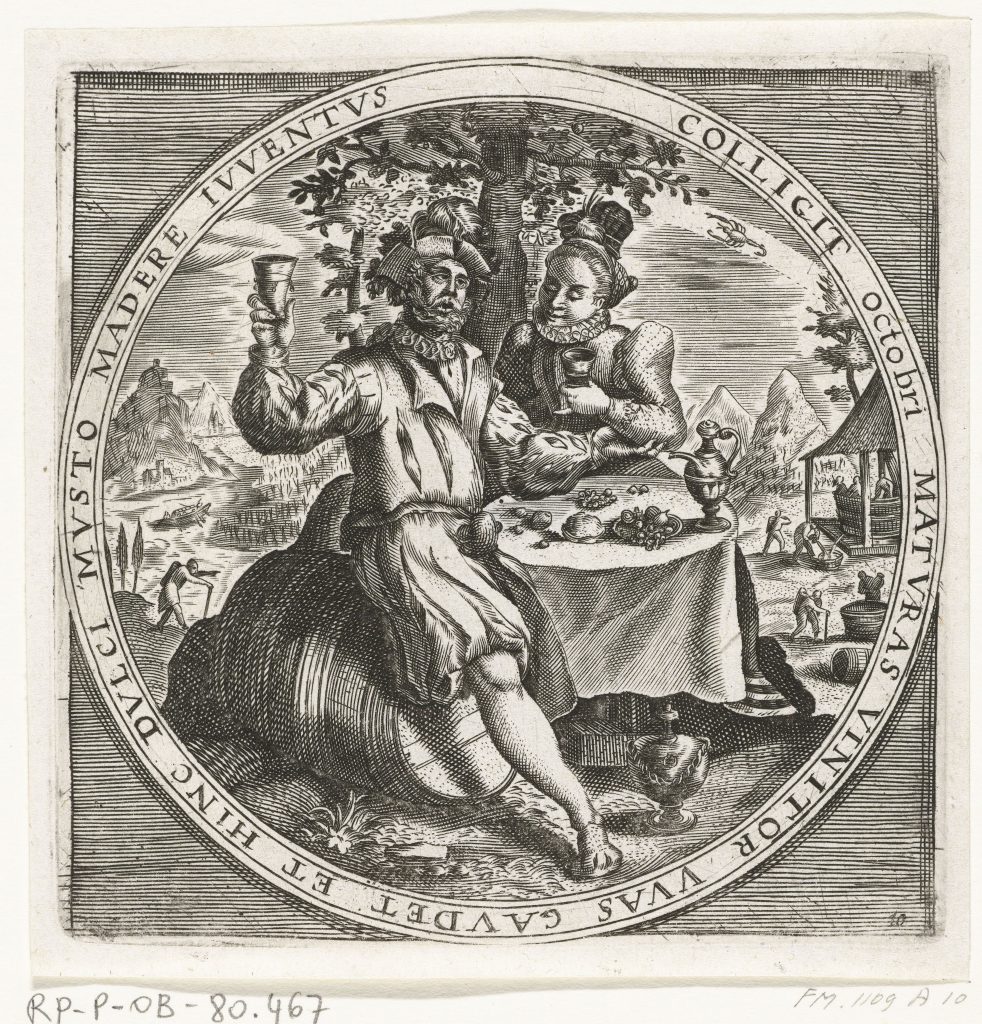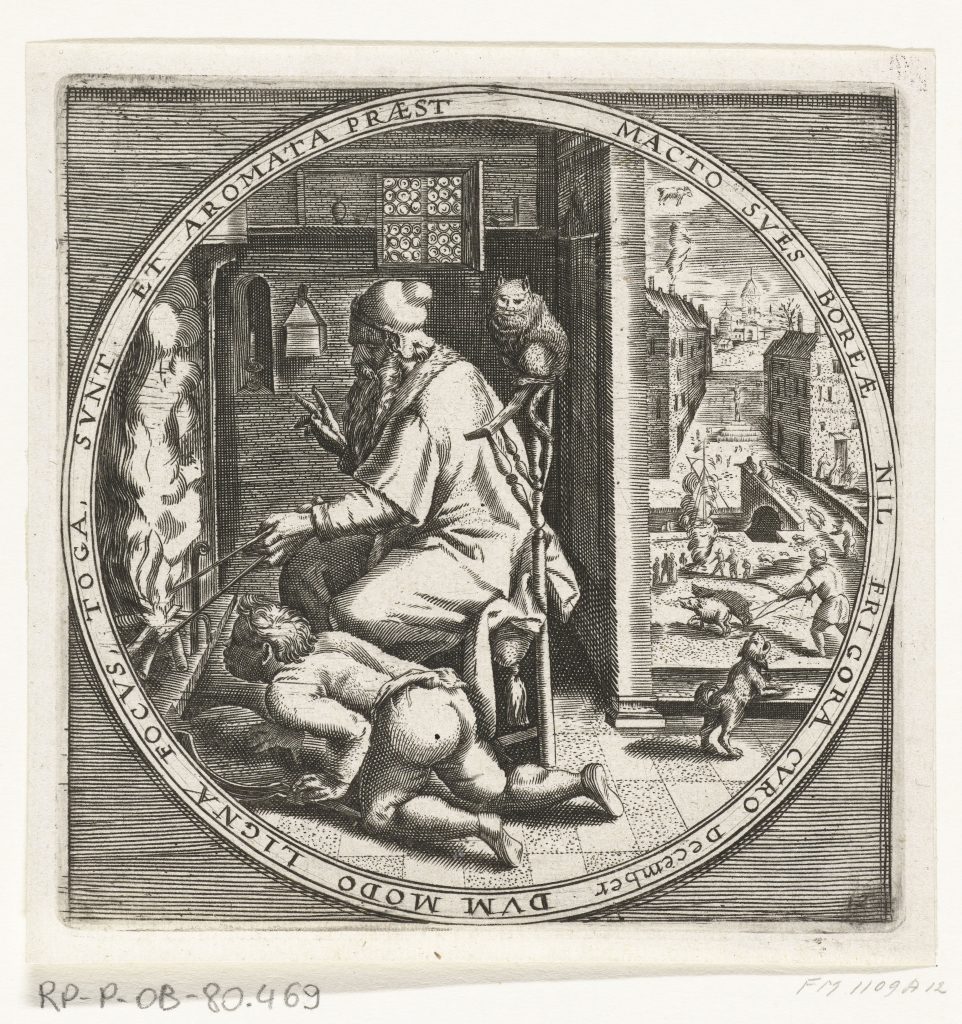
17th Century Almanac for March
The 17th Century almanac for March – the month of ‘many weathers’, hard labour, saints and mad hares.
17th Century Life and Agricultural Labour
In the 17th Century, March was very much a month of saints’ days and agricultural labour. St David’s Day was marked on the 1st and St Piran, the first of the Cornish saints, on the 5th of March. It was a time when the ground had to be prepared for the spring crops. This meant ploughing last year’s wheat field one more time, often in wet, heavy soil and bitter cold.
In theory, each strip was an acre of land. It was 220 yards long (40 rods or one eighth of an English mile) – the distance a pair of oxen could drag a plough through the ground in one draw before they needed a pause – known as an ‘acre length’ or furlong (literally a ‘furrow-length’). A strip was 22 yards wide (four rods or one chain) – still the length of a cricket wicket.
St Gregory’s Day on the 12th saw the sowing and harrowing in of the spring wheat, barley and rye. Cattle were moved off the meadows, to let the hay crop grow. They were moved onto the commons where they were fed what was left of the old hay to supplement the poorer grazing. St Patrick’s Day came on the 17th.
Medieval Open Fields and Enclosure
In those villages that were still farmed as open medieval fields, or ‘champion country’, each cottager could choose which spring crop he grew on his strip. The winter wheat and fallow fields were farmed collectively, ‘in common’. However, it was individual choice to grow peas, beans or spring grains – barley, oats or dredge (a mix of both). As a result, the field containing them would have consisted of a patchwork of varying crops in strips.
Today, only the Nottinghamshire village of Laxton is still farmed in this way. The rest have been broken up by enclosure, forcing many off the land and into the cities to find work. Harsh as enclosure was, it did bring greater productivity and was essential to feeding the expanding cities of the early industrial revolution. As Thomas Tusser himself said of open fields, ‘what is everybody’s care is nobody’s care’.
The Vernal Equinox and Lady Day
March the 21st marked the first day of spring and the Vernal Equinox, a time of equal light and dark, but also so often a time of gales. It was the start of lambing and of calving in the fields. Any calves born before the full Lenten Moon were kept on the croft and raised by the farmer’s wife. She was also expected to till and plant her garden, and set hops for brewing. By March, most householders had little or no fresh meat or vegetables left after winter. For those that could afford them, the arrival of fresh herring and mackerel off the coast must have been a blessing.
Finally, March the 25th was Lady Day. This was a quarter day, a day when rents were due. It also marked New Year’s Day for most people in England, Ireland, Wales and the colonies in the 1640s. Although Scotland and Europe celebrated the new year on the 1st of January, the Gregorian Calendar was not adopted across Great Britain and the colonies until 1752. One hangover from this is our financial year. Extraordinarily, the world’s financial markets, trade and business all still run on a medieval calendar.
The End of the First English Civil War
March is also the month that marks the end of the First English Civil War. It saw the surrender of the King’s last two field armies. On the 15th of March 1646, Sir Ralph Hopton accepted defeat and surrendered to Sir Thomas Fairfax and the New Model Army at Tresillian Bridge, outside Truro, in Cornwall. Less than a week later, on the 21st, Sir William Brereton cornered and defeated Sir Jacob Astley’s last army at Stow-on-the-Wold.
A year later, on 15th March 1647, Harlech Castle surrendered as the last Royalist stronghold on the mainland of Great Britain. Sadly, this did not bring peace. The Second Civil War erupted in early 1648.
The Egg Moon
For those that still watch the cycle of the moon, the new Egg Moon will rise on the 10th and be full on the 25th, after the equinox. Its rising will mark the start of Ramadan, the Holy Month of fasting, prayer and reflection across the Islamic world.
Whether you chose to sow your plot with beans, peas or oats, I wish you a full acre of success. Spring is almost sprung.
Follow & Read More
I will post more of the 17th Century Almanac and yearly activity in Early Modern Britain, next month. If you would like to receive an email notification of the next post, please click the button to follow.
In the meantime, this website includes more posts and articles about life in 17th Century Britain, Europe and the Americas at Historical Notes and Maps. These include notes and pages on the impact of the Little Ice Age and The General Crisis of the 17th Century. They include articles on the English Revolution and Great Rebellion. They also include Pike and Shot Warfare and battles of the English Civil War.
You can also find more posts on Early Modern history, Living History and re-enactment at News & Events. You may also wish to read about the English Civil War history talks and battlefield walks I give.
See More & Share
Alternatively, check out Facebook, Instagram, Twitter or YouTube for more posts. These include notes from my historical research, Living History and English Civil War fiction. They also include upcoming events and opportunities to meet. Or, follow on social media at #DividedKingdomBooks or #EnglishCivilWarFiction on:
If you want even more, join us in the Divided Kingdom Readers’ Club. Clubmen receive FREE access to exclusive short stories, email and more. Click the link to sign up and join us.
Spread the Word
If you like what you see, please click, share and spread the word via email or your social media on:





